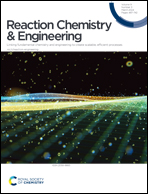High-Efficiency Functional Materials: Challenges and Developments in Solution and Dry Processed Green OLEDs
Abstract
Since their initial introduction at Eastman Kodak in 1987, OLEDs have continuously advanced along a longer route. Because of their intriguing qualities, OLEDs are currently highly regarded in display and lighting industries. OLED device technology has experienced constant expansion in the past as one of the study fields that sparks and propels advancements in the academic community and industry. Currently, OLED devices have achieved remarkable progress with three types of emitting materials, i.e. fluorescence, phosphorescence, and TADF. The appropriate design and synthesis of some effective green dopants in academia and industries are incorporated in this review. In addition, this review concentrates on the recent advancement of green emitting materials in terms of the molecular design approach and device efficiency, presenting a brief outline of highly competent well-known green phosphorescent TADF emitters and MR-TADF emitters. Recent green phosphorescent TADF emitters have been chosen to discuss their device efficiency with respect to their molecular design evolution. Moreover, some green MR-TADF emitters are also mentioned because of their crucial requirement in upcoming display technology.

- This article is part of the themed collection: Reaction Chemistry & Engineering Recent Review Articles, 2024


 Please wait while we load your content...
Please wait while we load your content...